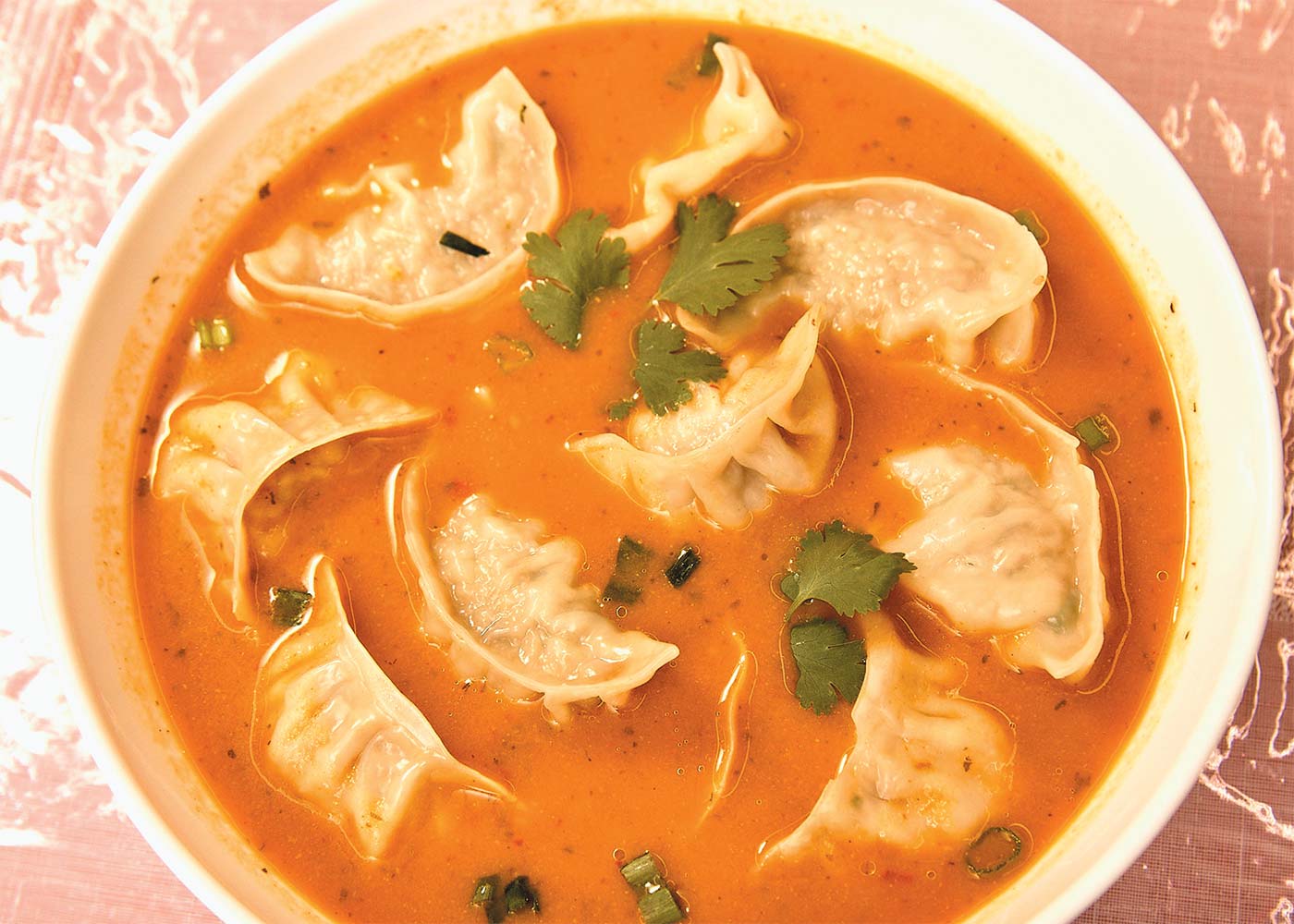Dumplings & Deities: Namaste Momo Cottage
Lakshmi, the Hindu goddess of wealth and purity, stands guard from inside a framed painting above the open kitchen window at Namaste Momo Cottage as the stinging, peppery scent of sautéing chilis floats through the room. Her watchful presence follows the Nepali tradition of decorating homes, businesses, and public spaces with beloved deities. Lakshmi is supposed to bring wealth and prosperity to the restaurant, a goal buoyed by the delicious food cooked in its kitchen.
Once you’re hit with the aroma of spices emanating from the tiny kitchen, you know you’ve arrived somewhere special. That kitchen is where over 1,000 momos are steamed each week, making this the epicenter of the Nepali national dish in Jersey City.
Momos, or momo-cha, are spoon-sized dumplings filled with meat, vegetables, or paneer cheese, and spices like garlic, ginger, and onion. They are the ubiquitous dish of Nepal—eaten at home, as a street food snack, and at cultural and religious celebrations. While many cultures have their own version of a dumpling, momos are perhaps most similar to Chinese baozi, with the major difference being that baozi have a fermented yeast dough and momos lack yeast.
Momos originated in Tibet and were brought to Nepal around the 14<sup>th</sup> century by Newar migrants who settled in the Kathmandu Valley. They were traditionally made at home, as a family activity, using whatever spices were on hand. As they grew in popularity, street vendors and then restaurants began to sell them. With their own unique Nepali style, they have become one of the country’s most popular dishes. The major difference between Nepali and Tibetan momos today is that the Tibetan variety is often filled only with meat (usually yak), without any added vegetables, and usually without any spice other than salt. The wrapping on Tibetan momos is thicker; the wheat taste is more profound than in Nepali momos.
Namaste Momo Cottage was founded by Deepa Uprety and Nirmala Kumal. Their friendship formed on an F train traveling through the Jackson Heights neighborhood in Queens. The two bonded over a shared cultural history and became fast friends. Kumal had a long history of working and volunteering in the nonprofit sector and Uprety was a practicing lawyer in Nepal. After moving to the United States, they worked a variety of jobs to make ends meet. Over time, recognizing each other’s entrepreneurial spirit, they began hatching plans to go into business.
The shop and restaurant were launched in 2021, at a time when many businesses across the country were closing due to the pandemic. Despite this, the business has been successful, due to the hard work of its owners.
“We decided to start the momo business a few years ago with a goal to stand on our feet and also to showcase the strength of women in entrepreneurship,” Kumal explains. Even during the early days of the pandemic, she noticed an increase in the amount of Nepali and Indian customers, as residents moved out of New York City and into the surrounding New Jersey townships. Namaste Momo Cottage has served as a home base for Nepali cooking for the new arrivals.

THE RESTAURANT ADHERES TO THE HINDU PRACTICE OF NOT EATING BEEF, AND OFFERS MOMOS WITH CHICKEN, VEGETABLES, OR PANEER CHEESE FILLINGS.
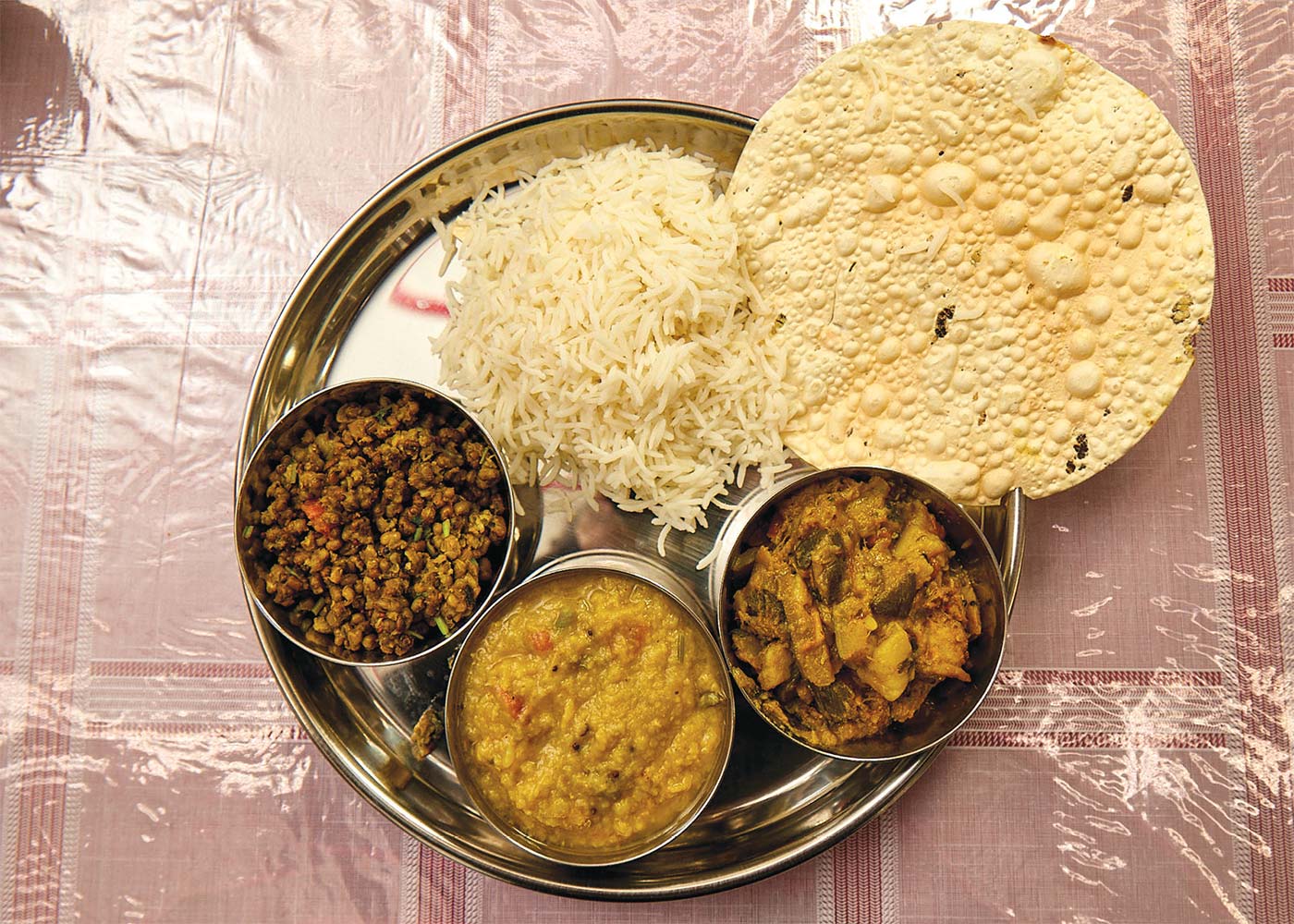
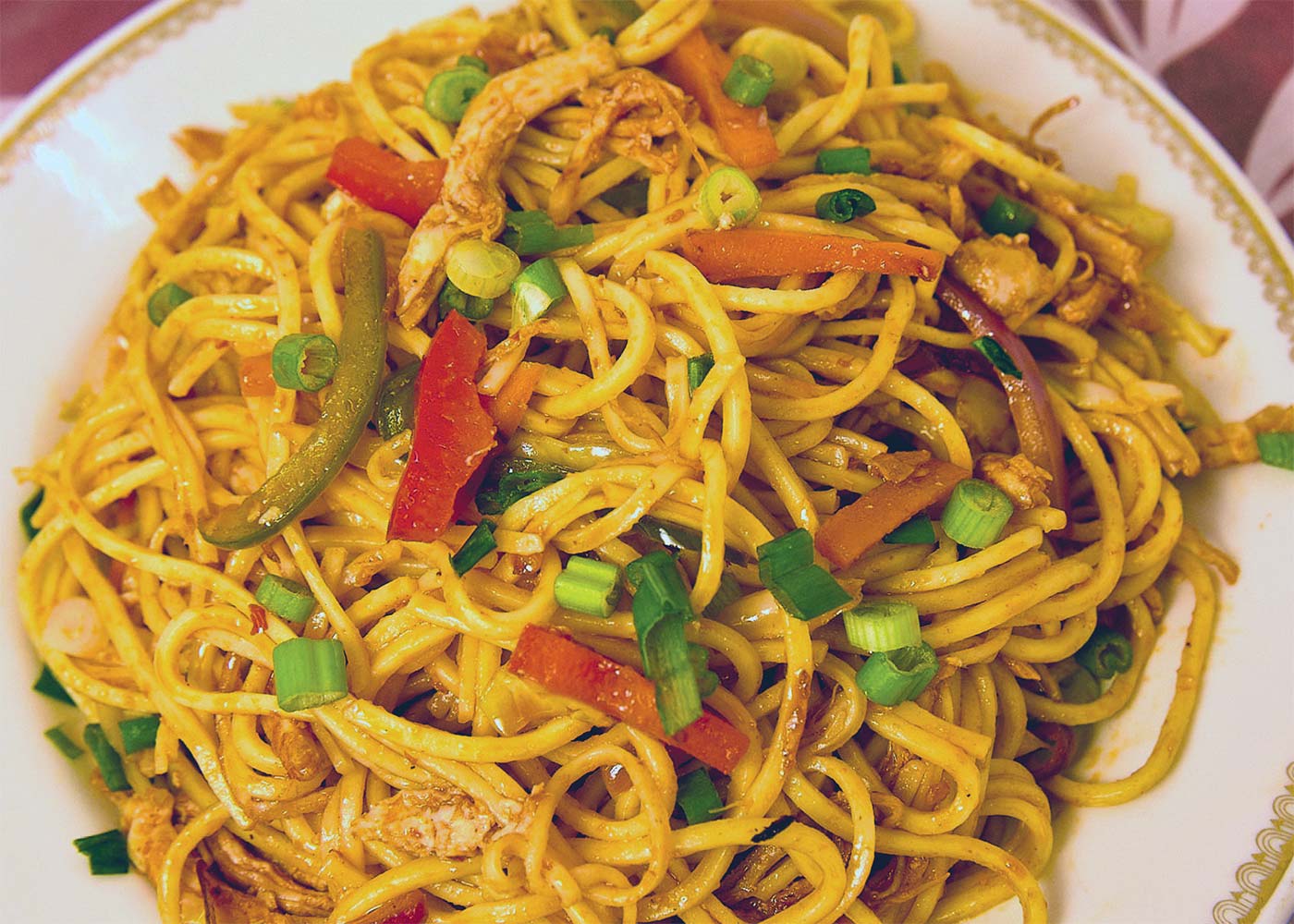
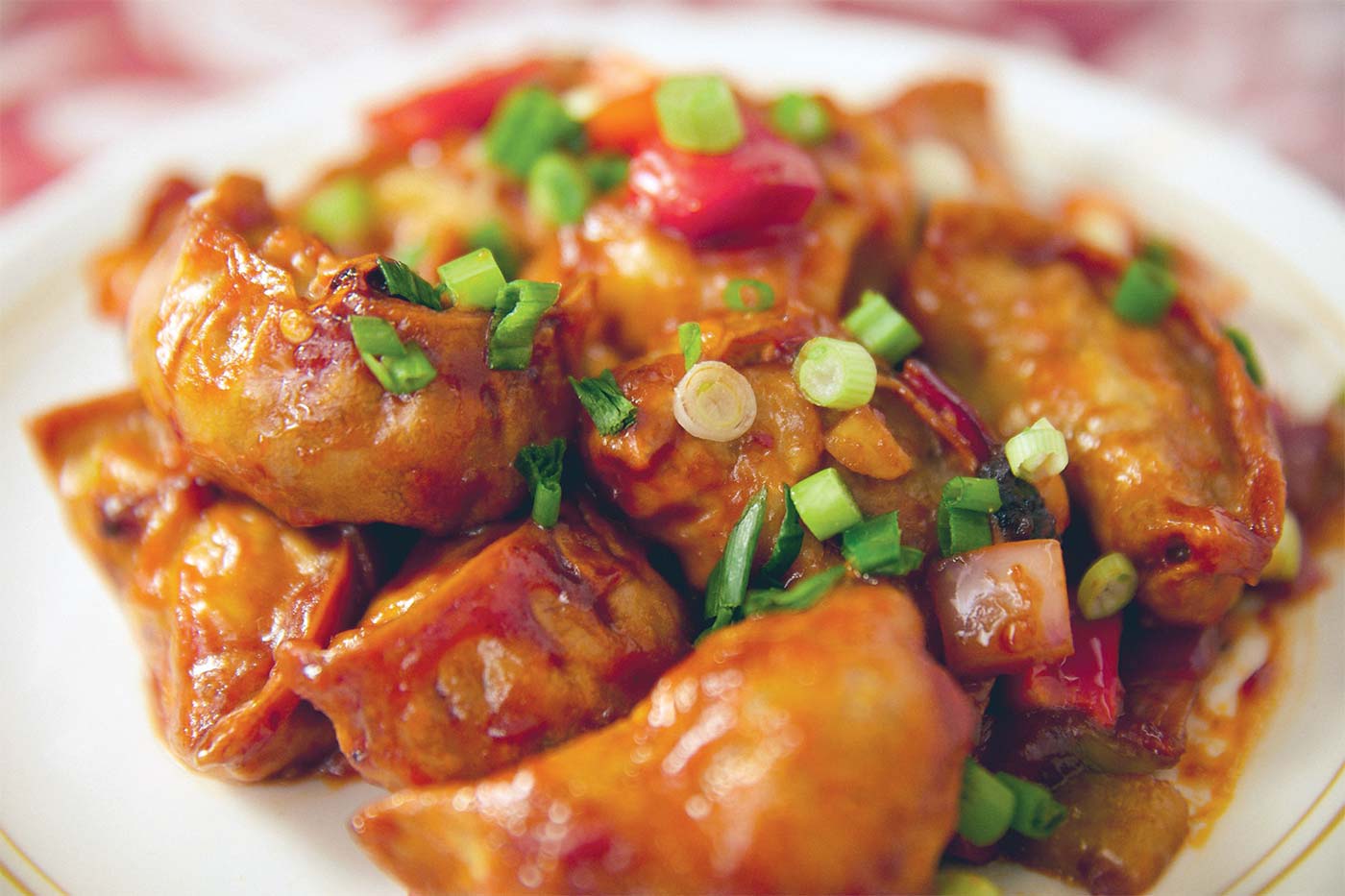
While both women perform a variety of tasks at the restaurant, Kumal tends to manage the business end, and Uprety the food. When Uprety arrived in the United States in 2015, she had no professional cooking experience. In fact, she first learned to make momos from instructional videos on YouTube. Now, she moves around the small kitchen with confidence and pride, emulating the spirit of classically trained chefs. Many regular customers hail from Nepal and Northern India, and Namaste’s momos remind them of the flavors of home, giving Uprety’s version a claim to authenticity.
Momos can be formed into a variety of shapes, but the two most common are round and half-moon. At Namaste, momos are half-moon shaped—the shape Uprety first learned to make. She notes that it allows for more filling, which customers appreciate. The momo wrapping is made of simple ingredients: white flour, salt, and a little oil to keep it moist. (Namaste offers specialty orders—with flour mixed with spinach, beetroot, or carrot—for a colorful variation.) Shaping momos takes practice to perfect, with many burst dumpling casualties along the way to mastery.
The restaurant adheres to the Hindu practice of not eating beef, and offers momos with chicken, vegetables, or paneer cheese fillings. An order of traditional momos comes either steamed (most popular) or pan-fried. Two common chutney dipping sauces are available: a thin tomato-based sauce with a flavor like tomato soup, and a spicy chili-based sauce similar to sambal. Homemade aloo achar, or potato pickle, is another delicious option. It has a taste like a tangy, sour potato salad, with a burst of flavor from chuk amilo, or concentrated lemon.
The menu also offers jhol momos, filled with minced chicken or paneer, and served in a beautiful sunset-orange soup of tomato, black soybean seed, garlic, tomato, turmeric, Szechuan pepper, and cilantro. The soup has a rich mixture of flavors: salty, spicy, sour, and a fresh, floral taste from the cilantro. This is a life-giving dish, best for chilly nights, nursing a cold, or reenergizing your spirit after a hard day of work.
The chicken chili momos are first pan-fried, and then sauteed with red and green peppers, white and green onion, and topped with a sauce of tomato, garlic, and chili. Each savory bite is packed with a spicy kick from the chilis and sweetness from the tomato. A vegetarian version is also available.

OVER 1,000 MOMOS ARE STEAMED EACH WEEK, MAKING THIS THE EPICENTER OF THE NEPALI NATIONAL DISH IN JERSEY CITY.
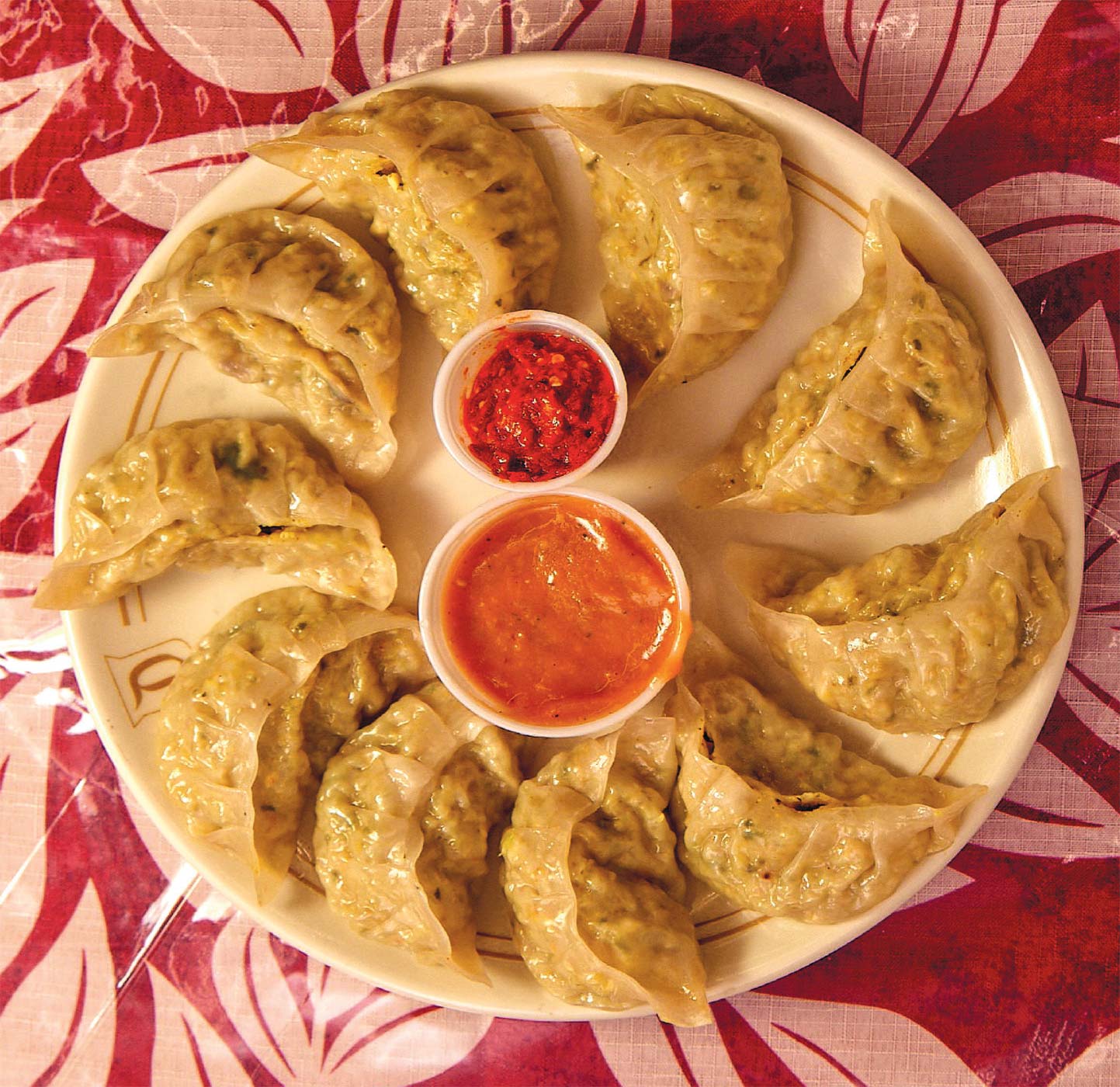
Momos are the star of the show at Namaste Momo Cottage, but the menu has other delicious Nepali offerings. The country was one of a few that was able to resist European colonization, but it is landlocked by China, India, and Tibet, and close geographically to Bhutan and Bangladesh. Aspects of the surrounding food cultures have blended into Nepali cuisine. Because of this, Kumal notes, “Nepali food is true fusion food.”
Due to this, you may recognize chicken chow mein, a classic Chinese stir-fry dish whose American variation was first introduced by Chinese immigrants and is commonly found on menus at American Chinese restaurants. Stir-fried noodles are combined with stewed chicken, red and green peppers, and onions. Every bite has a surprising kick of heat. Uprety will adjust the level of spice per customer request, ranging from slightly sweat-inducing to a scorching burn. Thukpa, a noodle soup dish from Tibet, comes in a chicken, vegetarian, or egg variety, and includes onion, carrot, ginger, black pepper, green beans, and cabbage.
Aloo paratha, stuffed potato bread, is excellent for soaking up any remaining liquid from soup or for grabbing the last bits of spicy chili oil left over from chicken chili momos. The bread is a thicker, chewier version of roti with a buttery flavor. The restaurant also serves a popular Indian street food snack, the Bombay Masala Sandwich, a fresh, herbaceous grilled cheese sandwich made with mint, cucumber, cilantro, tomato, and red onion.
For dessert, there is sel roti, a ring-shaped, deep-fried treat made from rice flour, cloves, cardamom, and ghee. The result is a semi-sweet, chewy interior and a crispy outside. In Nepal, sel roti is a special treat, served at weddings, special ceremonies, and at the Hindu celebrations Dashain and Tihar.
A painting at Namaste sits atop a spice shelf adjacent to the dining area. According to Uprety, the image depicts “The Power of the Strong,” a fitting title for an image of a god who is tossing a horse by its hindquarters while surrounded by a python and a charging elephant, while wrangling a boar. The deity is intended to ward off negativity and to keep staff and customers happy within the walls of the shop. From the looks of the smiling faces munching on momos and slurping noodles, it is clear the image is working.
Namaste Momo Cottage
3623 John F. Kennedy Blvd., Jersey City
201.659.6255
momocottage.com


